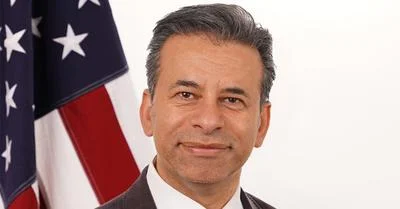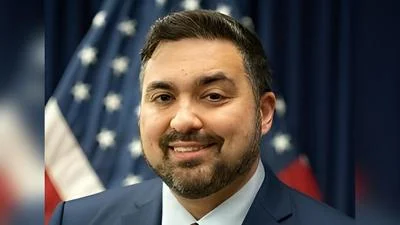In 2014, ISIS took control of Rawa, Iraq, forcing residents to flee for their lives and leave behind their homes, belongings, and any semblance of normalcy. Rawa, located in western Iraq’s Anbar Province, was one of the last Iraqi towns held by ISIS when it was liberated by the Iraqi army in November 2017. Prior to Iraqi forces capturing Rawa, ISIS fighters planted improvised explosive devices (IEDs) in and around homes, streets, farmland, and critical infrastructure. These explosive hazards prevented displaced residents from returning to Rawa and rebuilding their lives and the local economy safely.
Yussef Shareef, 44, and his family were one of the first families to come back to the al-Kalah neighborhood of Rawa. They quickly faced the devastating effects of the ISIS-planted IEDs firsthand. In June 2020, Yussef was rushed to the hospital after accidently setting off an IED while helping his neighbor tend to his garden. Since the accident, Yussef has had seven operations, still has difficulties moving his right leg, and now uses crutches while walking. Yussef’s experience is not unusual. In 2018, Yussef’s younger brother Sultan, known for warning others about the location of IEDs, was only 19 years old when he was killed by an IED on the same street.
Yussef with one of his sons outside their home in al-Kalah, Rawa (Photo courtesy of Norwegian People’s Aid)
In April 2021, the U.S.-funded demining organization Norwegian People’s Aid (NPA) started the dangerous and methodical task of clearing ISIS IEDs from the al-Kalah neighborhood of Rawa to facilitate the safe return of displaced communities. The U.S.-funded deminers have now cleared a total of 53 houses in Rawa including 41 in the Al-Kalah neighborhood. During the high-risk building search and clearance of over 90 floors and 400 rooms, the deminers found and safely removed 9 IEDs, more than 1,400 IED components, and over 700 items of unexploded ordnance (UXO) and abandoned explosive ordnance from the homes and surrounding areas. Many of the explosive hazards were found in a house that ISIS had used as an IED production facility. As a result of this ongoing U.S.-funded project in Anbar province, the families of Rawa are now able to return safely to their homes and begin rebuilding their lives. NPA anticipates that a total of 534 people will return to their cleared homes, including 143 women, 114 girls, 141 boys and 136 men.
Today, Iraqi civilians still face the dangers of landmines, UXO, and IEDs from conflicts new and old that continue to kill and maim civilians. ISIS used mass-produced, technologically sophisticated IEDs to booby-trap homes, public spaces, and farmland to discourage the return of internally displaced persons, indiscriminately kill innocent civilians, and deny returning communities access to basic services. These IEDs also block the delivery of humanitarian assistance and prevent economic recovery.
IED components recovered from an ISIS IED factory in al-Kalah, Rawa (Photo courtesy of Norwegian People’s Aid)
The United States is dedicated to saving lives and building peace across Iraq and since 2003 has invested more than $635 million in clearing landmines, UXO, and IEDs across the country. Since 2015, the United States has focused its clearance efforts in areas liberated from ISIS. The United States’ conventional weapons destruction (CWD) programs remove IEDs and other explosive remnants of war from critical infrastructure sites including hospitals, schools, factories, roads, power stations, water pipelines, airports, and grain storage facilities to facilitate repairs and the delivery of essential services.
The United States remains the world’s largest international donor to CWD, providing more than $4.2 billion to support humanitarian mine action, physical security and stockpile management and associated activities in over 100 countries since 1993. For more information on how the State Department is strengthening human security, facilitating economic development, and fostering stability through demining, risk education, and other conventional weapons destruction activities, check out our annual report, To Walk the Earth in Safety, and follow us on Twitter @StateDeptPM.
About the Author: William Gifford is a Resource Management Analyst in the Bureau of Political-Military Affairs, Office of Weapons Removal and Abatement at the U.S. Department of State.
Source: U.S. Department of State, Bureau of Political-Military Affairs









